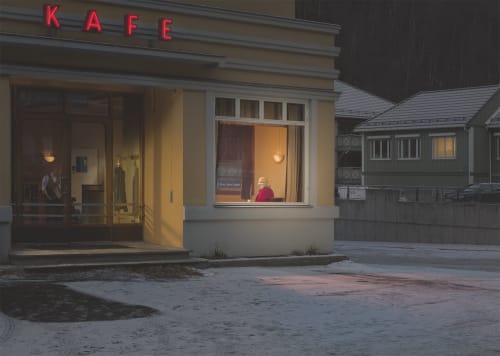“Once my dream was to become a film director. Now, when I look back at the images I’ve created, I realize that together they form the film I never got to make”.
Ole Marius Joergensen
Curently at the new gallery location, Obscure Sphere by Norwegian Artist Ole Marius Joergensen .October 11th-December 11th 2023
Obscure Sphere will feature the artists latest work " All that was left was a yellow Duck"
In his last series “All that was Left was a Yellow Duck,” Joergensen references the Norwegian painter Hans Gude, whose depictions of the landscape and its people reflect the realities of rural life.150 years later, Joergensen wanders the same winding roads and landscapes. It is this silence that the artist examines, as the simple and peaceful rural world is fading in favor of today’s complex societies that is concerned with instant gratification.
Brightly colored plastic inflatables punctuate the otherwise serene vistas in Ole Jørgensen’s wryly titled All that was left was a yellow duck. The Norwegian photographer’s playful series pays homage to the 19th-century Düsseldorf school painter Hans Gude (1825–1903), updated for modern times.
Jørgensen makes skilled use of the romantic landscape idiom, transforming his native rural surroundings into striking painterly compositions filled with subtle atmospheric effects. Likewise, the recurrence of solitary figures–hikers and swimmers absorbed in their activities or gazing off into the sublime distance–reveals a keen depth of understanding of the visual tradition that the series engages. Against these pristine natural expanses, small details such as a beach towel or an orange Gore-Tex jacket serve to pull the scenes forward in the present day.
The partially deflated yellow duck from which the series draws its title, along with several other animal inspired pool floats, inject a mix of humor and melancholic surrealism, as if the people in Jørgensen’s scenes are vacationers at the end of the world. In these items, we see nature supplanted and transformed into artificial and disposable commodities. While these props may be viewed as a critique on our contemporary culture, by working within the landscape genre, Jørgensen cleverly points to a potential culprit in the visual tradition that bears as much responsibility as any for turning nature into an image.

